Bulgari
Bulgari: Renaissance Brand
Although inspired by the ancient world, the Renaissance was one of the most progressive times in history, with an emphasis on not simply looking back but, rather, taking the codes of the past — a forgotten thirst for knowledge and beauty — and using them to advance society. Many of the ideas of the era form the foundations of our scientific and cultural understanding today, a point that resonates with Babin who says: “Each period of time has added new layers of knowledge and beauty to mankind. So, it is for Bulgari in the 21st century. Our watchmaking is consistent yet pioneering at the same time. Breaking the mould without eschewing what makes the art of Swiss watchmaking fascinating. Our aim is to pay tribute to our ancestors while providing our grandsons with an ultimate horological education.”
As Italian in outlook as Bulgari itself, the Renaissance began in Florence, gradually spreading to other city-states in Italy and beyond. Human knowledge grew exponentially. Christopher Columbus, Marco Polo and Ferdinand Magellan opened up the physical world. Copernicus, Kepler and Galileo went further and explored the heavens. And, in the visual arts, Michelangelo, Raphael and Titian were all trailblazers. The era saw the emergence of some of history’s greatest names and led to the coining of the term “Renaissance Man” to describe those that exhibited exceptional talent in many areas. But perhaps the greatest of all these geniuses was Leonardo da Vinci — master painter, sculptor, scientist, inventor, architect, engineer and writer.

Leonardo da Vinci’s sketches

Leonardo da Vinci’s sketches
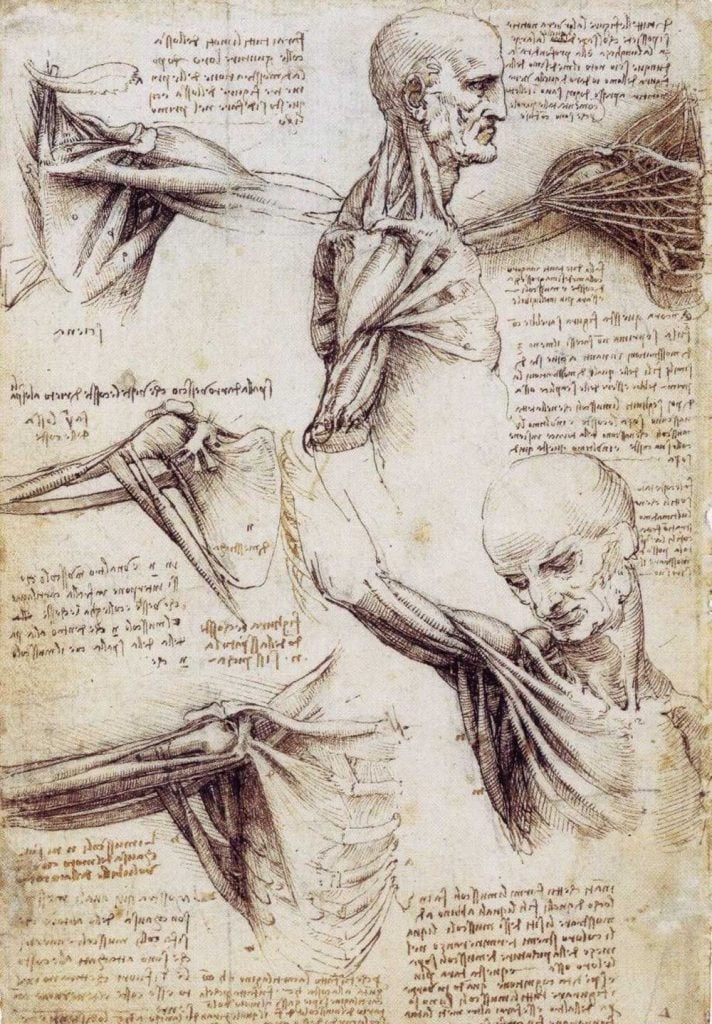
Leonardo da Vinci’s sketches
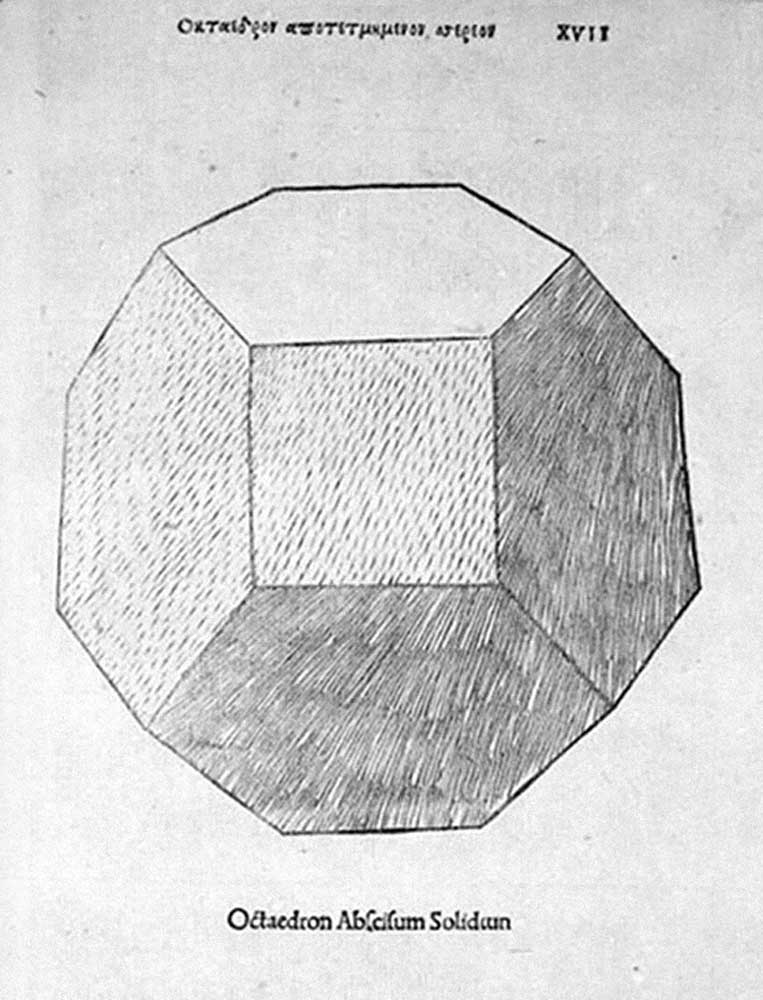
Da Vinci’s Octocedron Abscisum Solidum
Embracing Change
Change is dividing and, despite their overwhelming influence on society, the protagonists of the Renaissance did not always receive due appreciation in their lifetime. Similarly, on its debut in 2012, the Octo split opinion — some loved it, others hated it, but few were indifferent. However, if the Octo l’Originale was somewhat polarising among watch collectors, the resounding success of the ultra-slim Octo Finissimo on its launch in 2014, proved that something truly special had arrived.
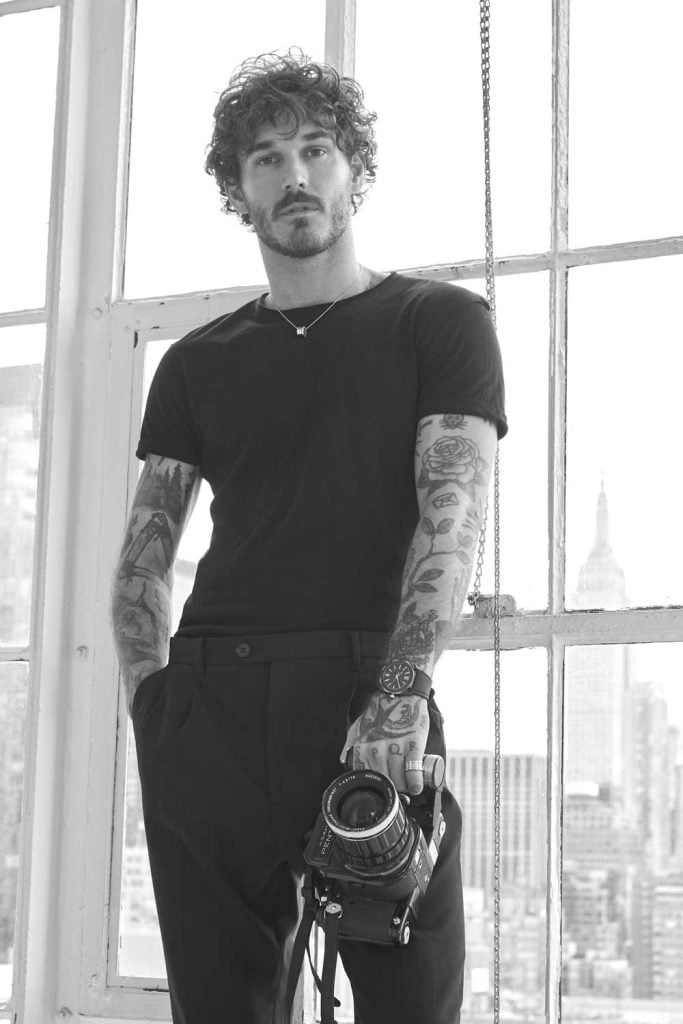
Octo L’Originale. Jacket and T-shirt, Saint Laurent (Image © Revolution)
Three years in development, it was very much a watch of its time — the world was only just starting to emerge from the financial crisis started by the collapse of Lehman Brothers bank in 2008 and watch design was reflecting this. Gone was the demand for unwearable, 50mm-plus behemoths, and in place was a call for something new to define the emerging style. And Bulgari leapt on this challenge, choosing to take traditional watchmaking and reinvent it with thinness as the mainstay of its new interpretation of elegance.
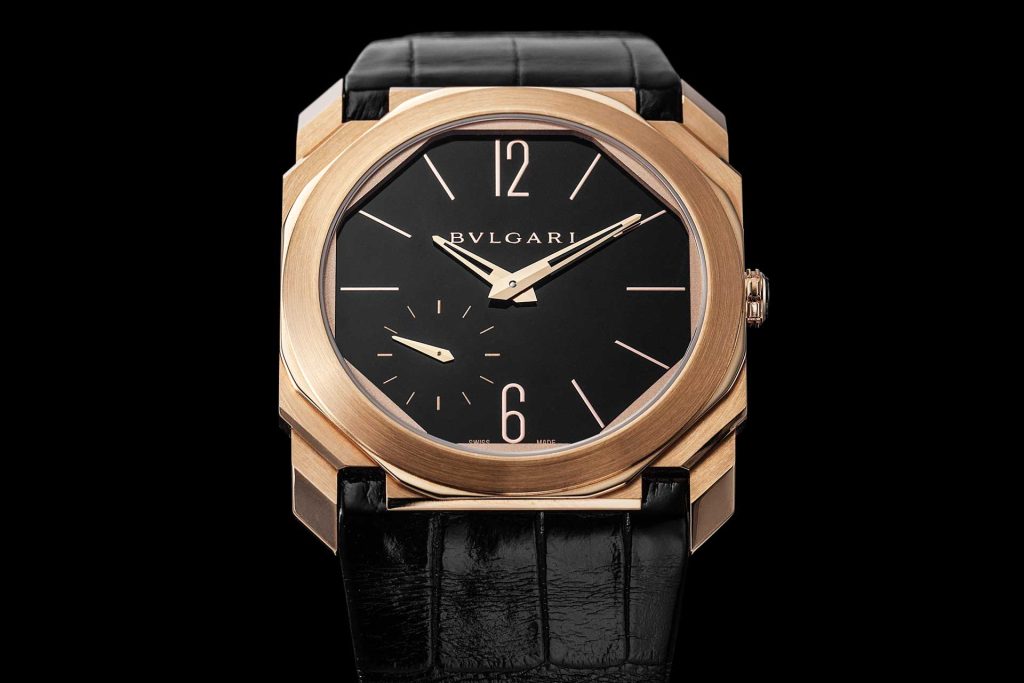
The Octo Finissimo Petite Seconds in rose gold, with hour markers that are galvanically grown and then transferred to the dial (©Revolution)
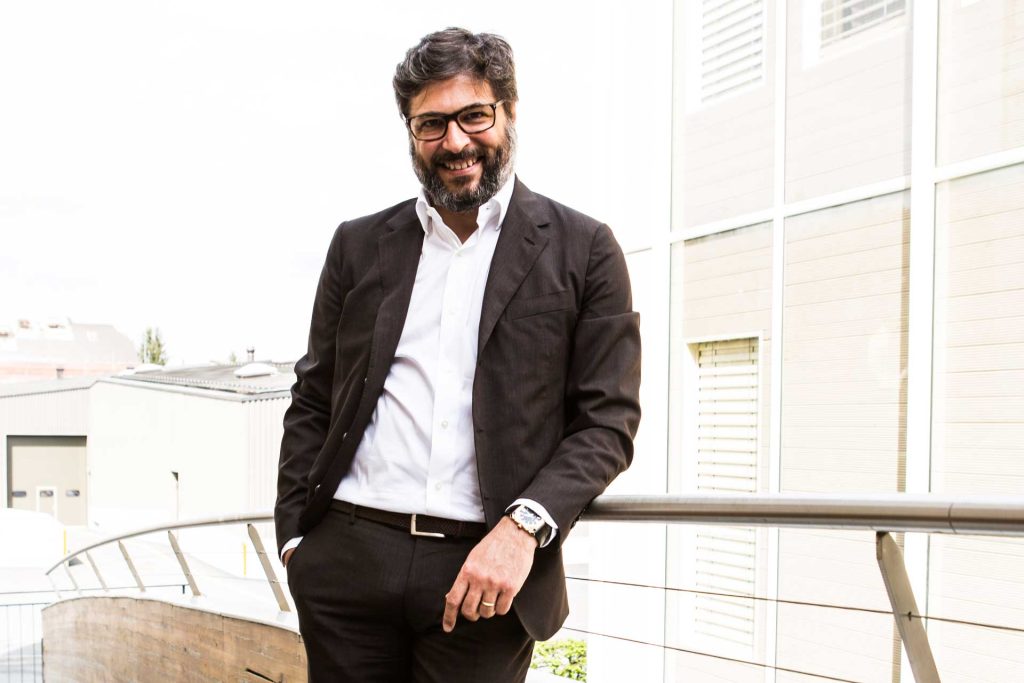
Managing Director of Watches, Guido Terreni
“To receive this amount of recognition from within our industry — an industry that is extremely knowledgeable – shows an understanding of our aims,” Terreni says with natural pride. “Very few watches that I know of have achieved this in such a small space of time. We have seen maybe one every 10 to 20 years since the 1970s. It is truly a breakthrough moment in the industry.”
But, despite the accolades and awards, both Babin and Terreni insist that the purpose of the Finissimo is not to break world-records and that these are merely a by-product of Bulgari’s attempt to reinterpret a 21st-century man’s wristwatch. And this is the message that the brand would like to communicate beyond the world of the connoisseur and into the consciousness of people who may only buy two or three watches in a lifetime.
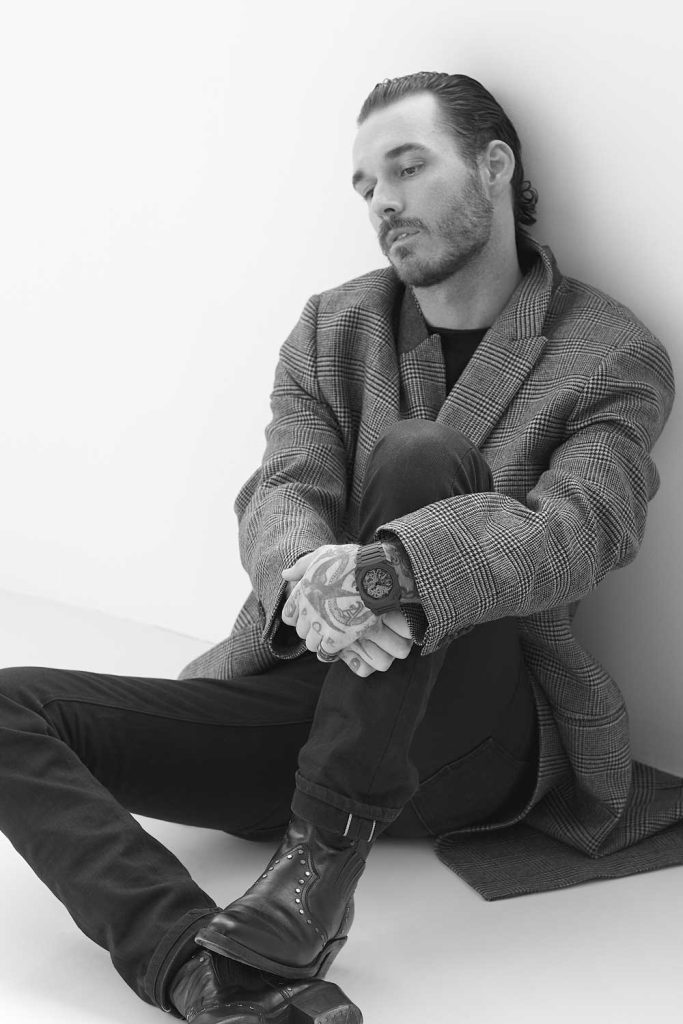
Octo Finissimo Tourbillon Skeleton Carbon. Jacket, David Alexander Flinn’s own; T-shirt, jeans and boots, Saint Laurent (Image © Revolution)
Babin concurs, adding: “Records are exciting as they stimulate internal creativity and out-of-the-box thinking,” says Babin. “And obviously they trigger news and create buzz and interest. So, yes, they are good, but they are not essential. What counts is challenging conventional wisdom. We are daring and pioneering in the true spirit of our founder Sotirio Bulgari. What does count with a record is its relevance to our brand identity and vision. That said, our Octo records are very meaningful and definitely anchor Bulgari as one of the most important brands in current Swiss watchmaking.”
The Perfect Score
Since 2009 Bulgari has been absorbing the know-how of its acquired brands, Gérald Genta and Daniel Roth, into the maison, and the watches we see today come from a combination of this heritage and Bulgari’s own ability to develop an in-house calibre. The result is a transformation of the capabilities from niche production to true manufacture. The Octo Finissimo would not have been possible without vertical integration at the highest level and the facility in Le Sentier today has the capacity to make every component except the escapement, barrel and rubies, giving Bulgari the freedom to develop quickly, making the brand the master of its own destiny.
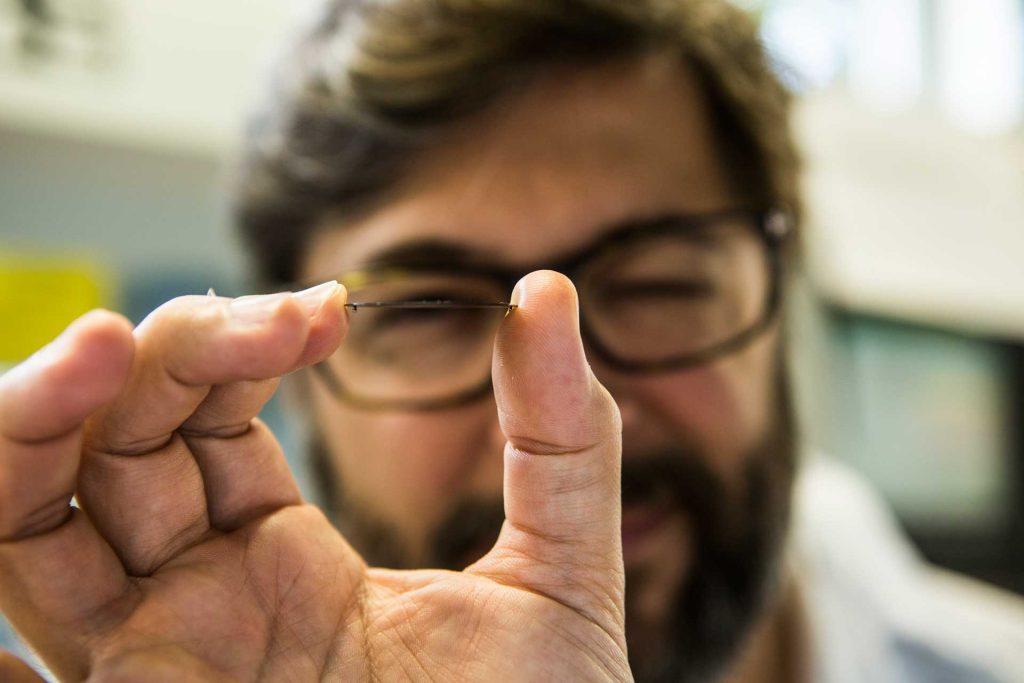
Guido Terreni show us exactly how thin the dial of the Octo Finissimo is
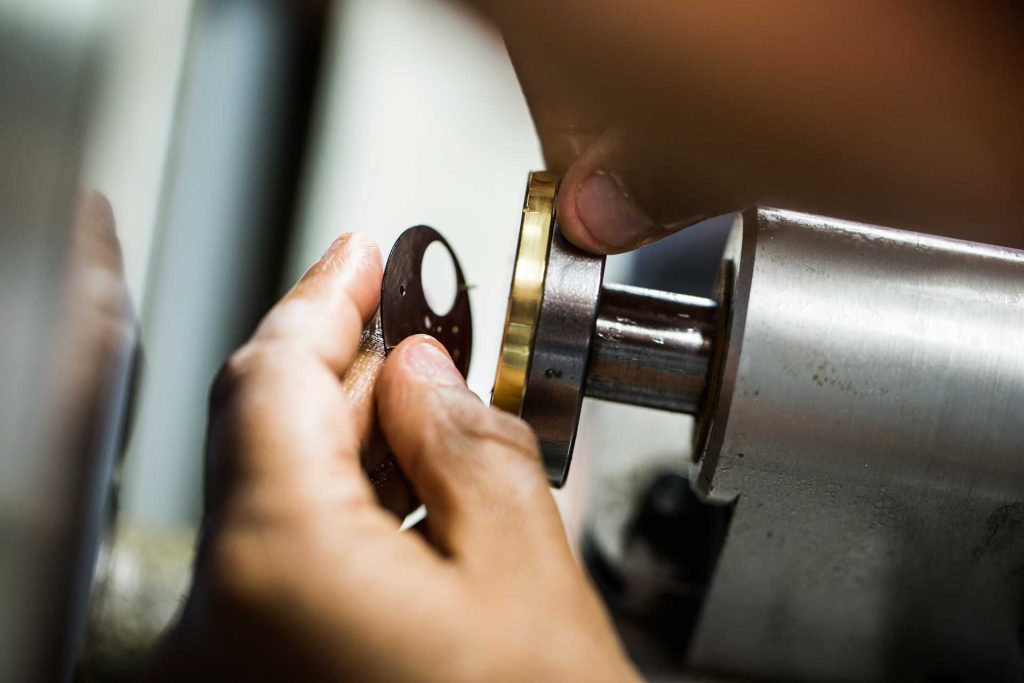
Fabricating and polishing the dial of the Octo Finissimo, which is just 0.3mm in thickness with lacquer applied
And the reason it has worked so nicely? “The luck factor always helps, but I believe the driving factor has been the vision of creating the most daring, elegant, timeless and contemporary man’s watch ever. This has led in turn to venture into ultra-thin mechanical movement technologies, as well as new high-tech materials. And obviously we have been consistent in executing that vision and patient in harvesting the fruits of our labor, making sure the seed was planted deep and grew strong. After 18 years in watchmaking, I know only too well how long it takes to build an icon and how rarely it happens in a watch brand’s lifetime. So, Octo has certainly delighted me — but not only Octo, Bulgari itself has exceeded my expectations.”
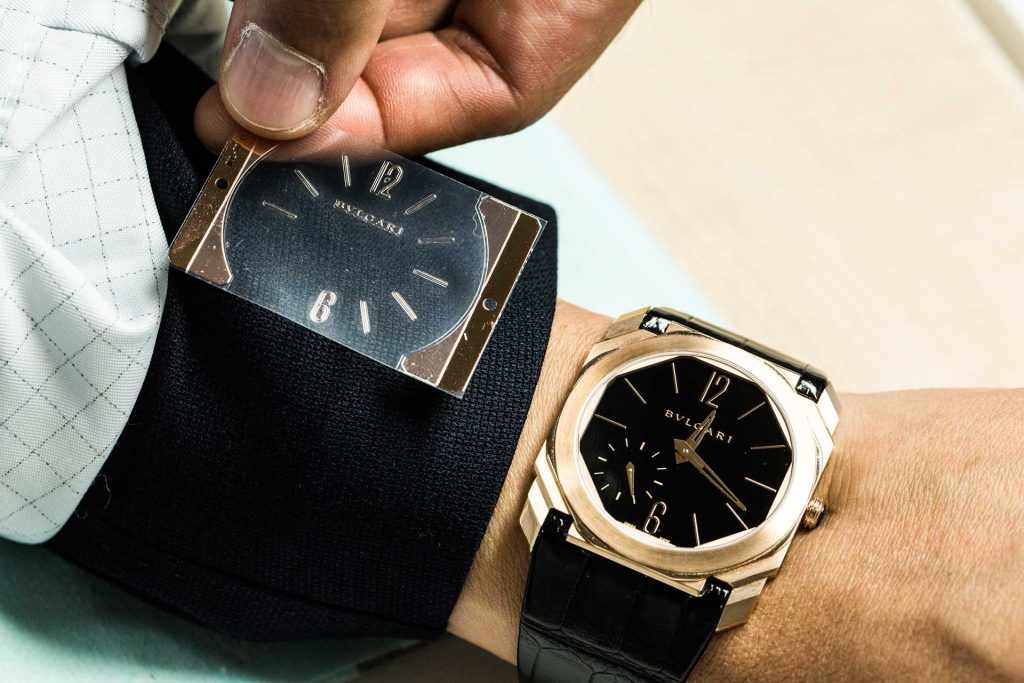
The indexes of the Octo Finissimo are grown in gold and copper, and are so thin they need to be transferred to the dial as if they are stickers (©Revolution)
The Finissimo Story
In delivering this new vision, Bulgari watchmakers have become masters of making the complicated look simple. The case is in two parts not three, so the watch is cased from the top. The sapphire crystal is 0.7mm and, says Terreni, is unlikely to go any thinner as it needs to be wearable every day. And, with the movement separate from the case it is much more accessible. “We are driven by aesthetics,” says Terreni. “While most manufacturers are dressing their movements with their cases, we are doing something different and looking at the watch as a whole.”
While some other brands when making ultra-thins have chosen to use the caseback as a baseplate to save on space, Bulgari has refused to do this due, in no small part due to a desire to display the movement. “I always think that to only see a watch from the dial-side is a bit sad,” says Terreni. “Breaking a record is never the goal at Bulgari, so we will not sacrifice our principles for this. Our automatic could have been thinner if we had placed the hand into the seconds sub-dial – in fact, it would have resulted in a saving of 3/10mm — but we were not prepared to compromise on the aesthetic.”
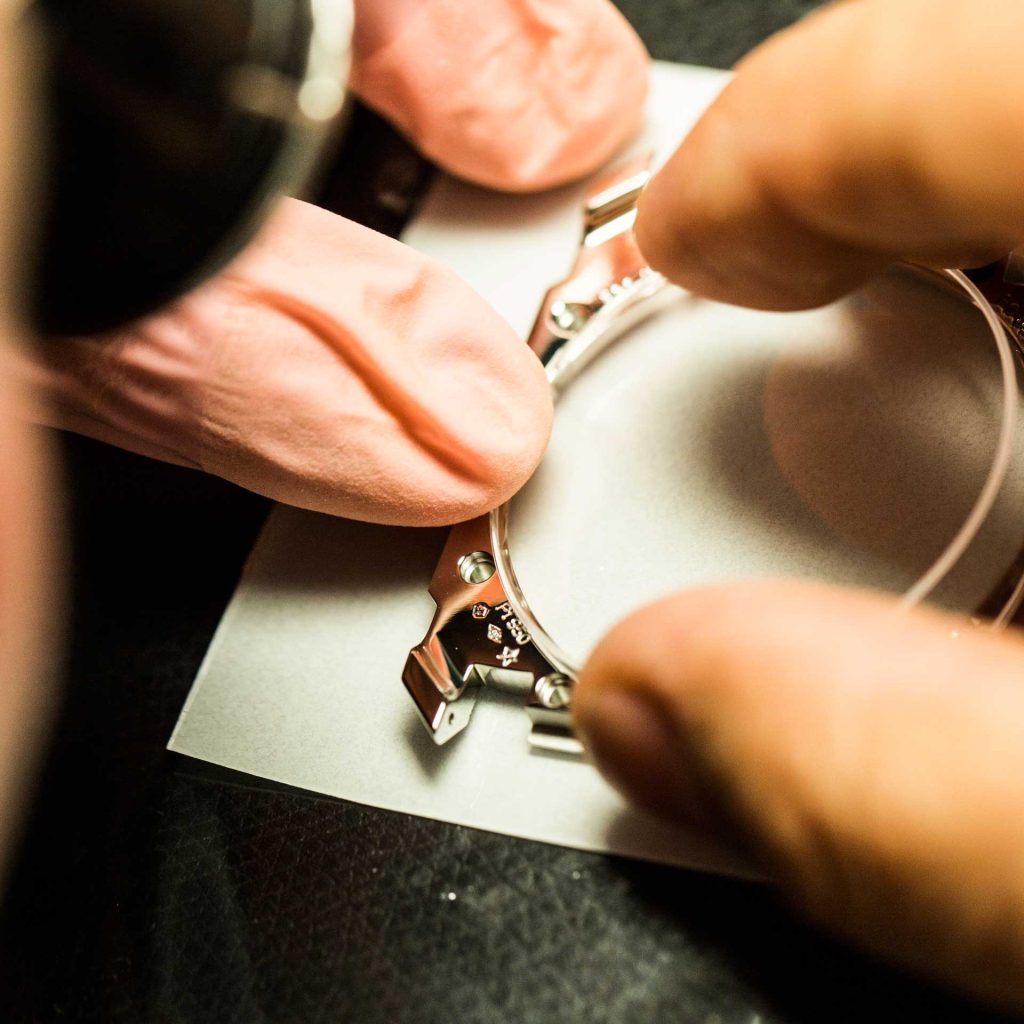
The sapphire back is integrated into the case of the Octo Finissimo, so the movement is placed into the watch from the front before the bezel is placed on top of it, effectively sealing it in
With a necessary delay to perfect the automatic Finissimo, 2014 saw the launch of a manual-winding version. The watch was classic, beautiful and featured a traditional pin and buckle strap. The same year saw the introduction of the record-breaking Octo Finissimo Manual Tourbillon, which found love the world over. The Finissimo Minute Repeater in 2016 gave a new stylistic direction and provided a second world record, scooping 10 major international watch awards. Specific materials were required for the sound amplification and the solution was found in sandblasted titanium, a material repeated in the third record-beating watch a year later when the Finissimo Automatic was eventually brought to market, featuring, for the first time on an Octo Finissimo, a bracelet with integrated clasp.
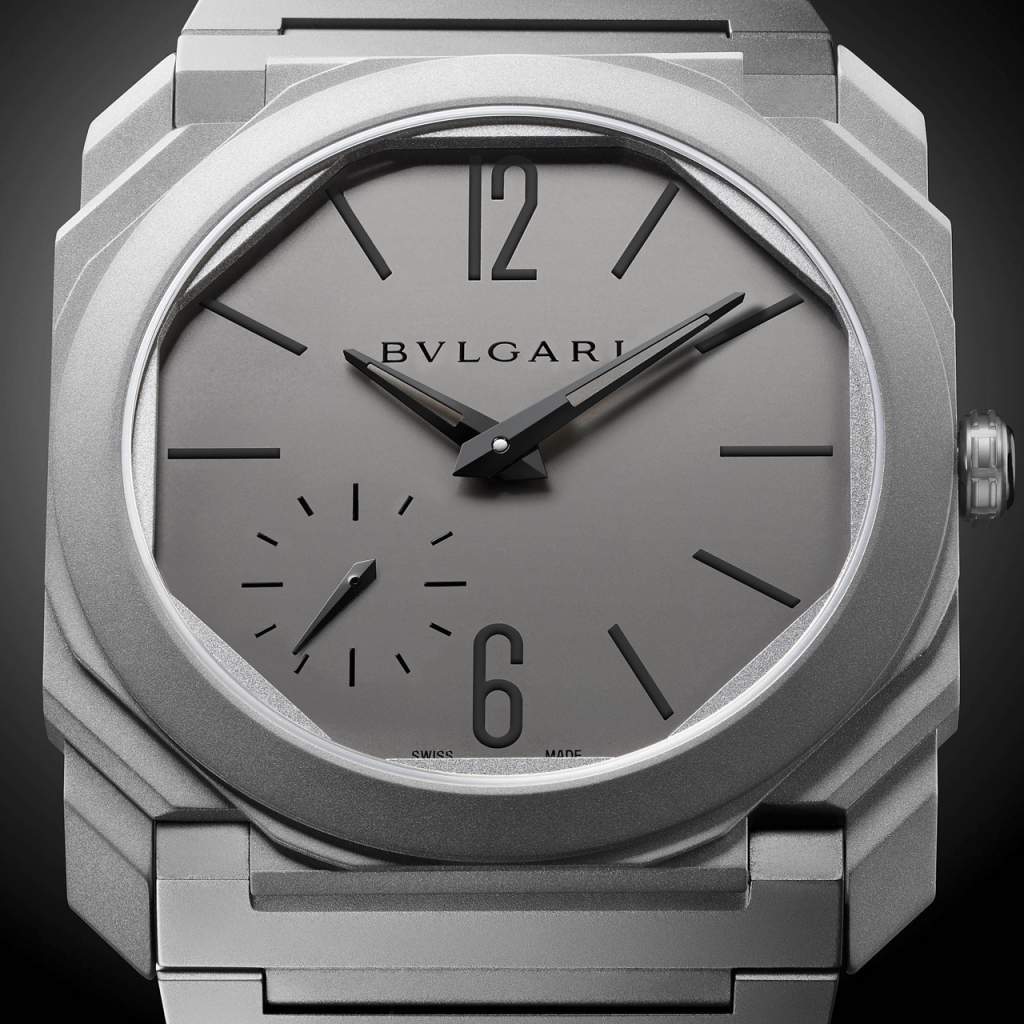
Octo Finissimo Automatic
Pushing Boundaries
Including the retrograde movements from 2010, which are now used in the Maserati models, the Octo family now has a total of 13 in-house calibres, the latest of which powers the 2019 Automatic Chronograph GMT combining two of the most useful modern-day functions and, unsurprisingly, the piece that Babin will be wearing in the months to come. “I love chronographs,” he explains. “But not the show-off, oversized ‘look at me’ pieces that we see from certain other brands. I prefer something discreet to treasure for my own selfish pleasure — masterpieces of craftsmanship which fit with a cool, low-key lifestyle.
“The chronograph really is the logical evolution of our expertise in elegant and contemporary watches, with a new mechanical revolution making it thinner than most time-only watches. I believe that it is the first really new chronograph in a long time — except perhaps the 1/100th and 1/1,000th of a second pieces from my former brand [TAG Heuer].”
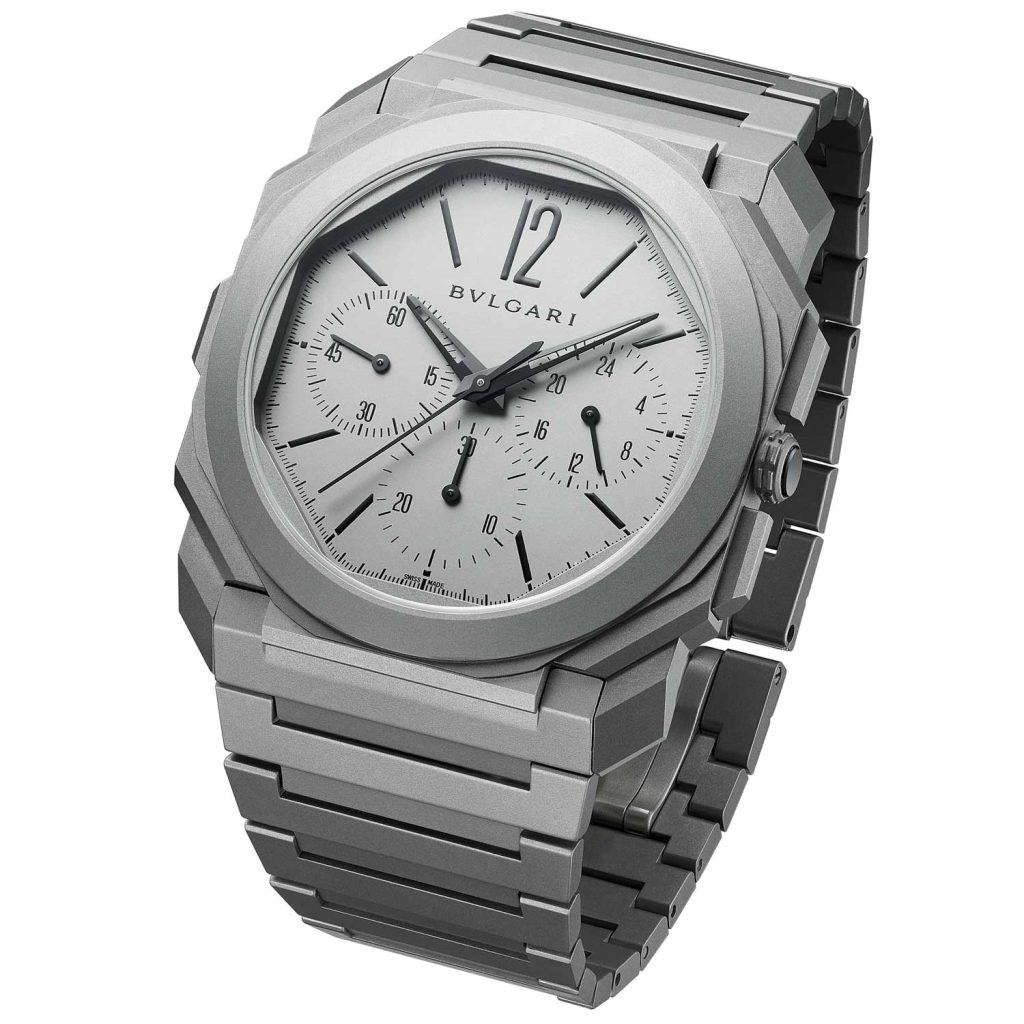
Automatic Chronograph GMT
The objective was to give a contemporary look to the chronograph, which, with few exceptions, has changed very little since the 1950s. “We are always thinking about our customers,” says Terreni. “They are sporty and big travellers, so combining these two complications is a unique way for us to present our first Octo Finissimo chrono.” With a desire to keep as much air on the dial as possible, it was important for the sub-dials to be well-spaced – something not always possible on a 40mm-plus dial due to the pivots on the industry standard ETA calibre being close to the centre. As slimness was also a requirement, a peripheral rotor was chosen leading to the overall 42mm diameter.
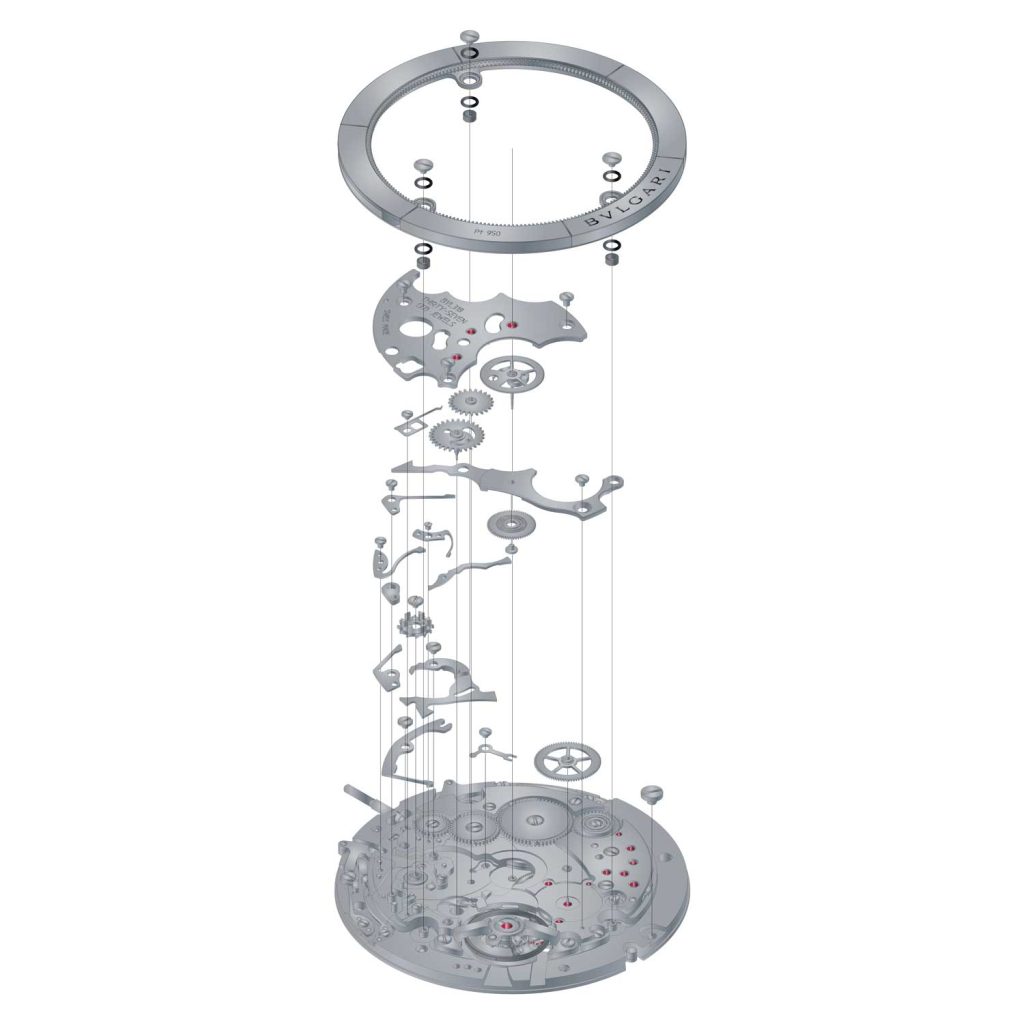
With the Finissimo Chrono Automatique GMT BVL 318, Bvlgari has achieved a record 3.3mm thinness thanks to the large diameter of the movement – 37.2mm as opposed to the 30mm diameter of the industry standard Valjoux 7750. This allowed a layout of the components across a flat surface as opposed to stacking them and accumulating their thicknesses. The use of a peripheral rotor in platinum, aluminium and Peraluman – an aluminium alloy widely used in the automotive industry with high resistance to corrosion – was also essential to keeping the caliber ultra-thin
“We use exactly the same approach for the dial. Here we have three counters, but the dial has the same construction – one layer of titanium with sandblasted finishing and very pure graphics.”

Automatic Chronograph GMT
Material Challenge
If we lay to one side the complexities of a skeletonised tourbillon movement in a full carbon case with carbon bracelet, this year’s main material challenge involves a model where black ceramic is used for the case, bracelet and buckle – a component that has to have a degree of elasticity, a property not normally associated with ceramic. But, as Babin points out, it is not challenge for challenge’s sake: “What counts at Bulgari is not the use of ceramic or titanium or silicium. What counts is the relevance of the material and its true added value – aesthetically as much as functionally. Bulgari Serpenti and Octo ceramics are first and foremost beautiful and extremely resistant. Surely this makes the designs even more contemporary and pleasurable to wear?”
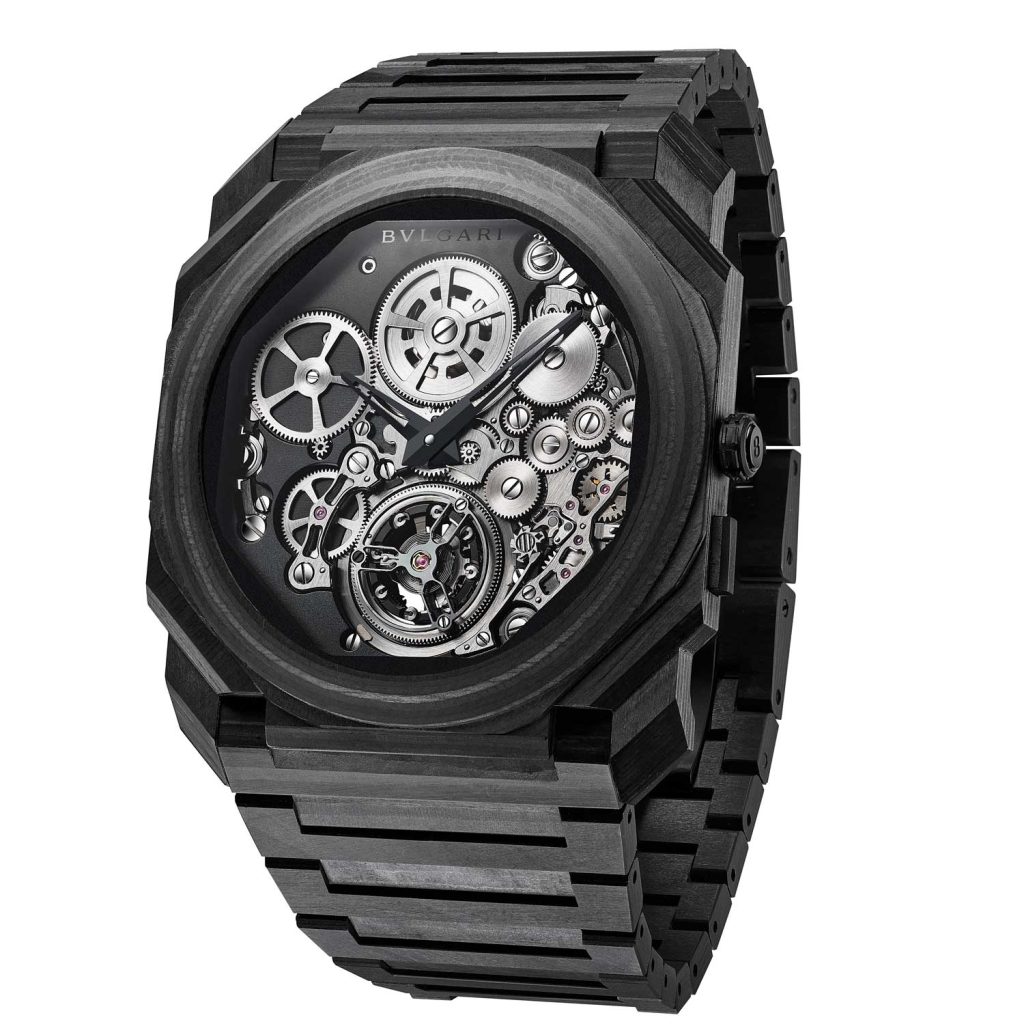
Octo Finissimo Tourbillon Skeleton Carbon
As ceramic retracts when fired, with different colours behaving in different ways, the process was far from easy and Bulgari decided to balance aesthetics and reliability, allowing a new tolerance for the bracelet taking it from 2.5mm to 2.8mm. The Octo Finissimo Ceramic Automatic contains a lot of R&D, but still manages a retail price of CHF 14,900. At just 5.5mm thick, the 40mm ceramic case with display caseback (water-resistant to 30m) really is an impressive feat. Add to that the ceramic crown, the ceramic dial and ceramic bracelet with folding clasp and the challenge in creating this piece of black magic becomes obvious. The hands are skeletonised and made in polished ruthenium to refract the light and allow easy reading of the time on this super-stealthy timepiece. Inside the case beats the 2.23mm-high automatic manufacture Calibre BVL 138 with platinum micro-rotor that provides 60 hours of power reserve from a full wind.
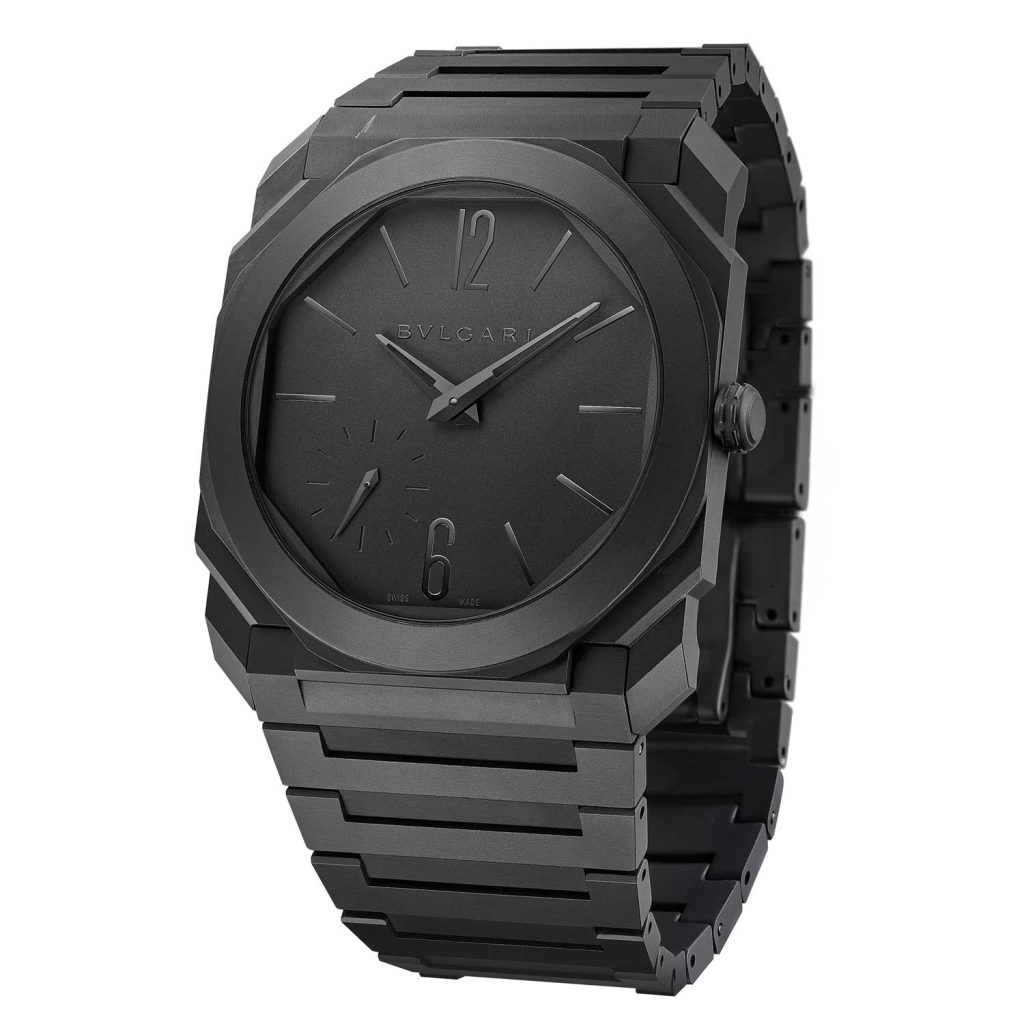
Octo Finissimo Ceramic
The skeletonised version of the ceramic watch features the same case dimensions as the Automatic but houses the manual-winding openworked manufacture movement BVL 128SK with small seconds and power-reserve indication. At just 2.35mm thick it provides 65 hours of power reserve. The openworked dial has a minute, seconds and power reserve track and faceted, skeletonised black PVD-plated hands.
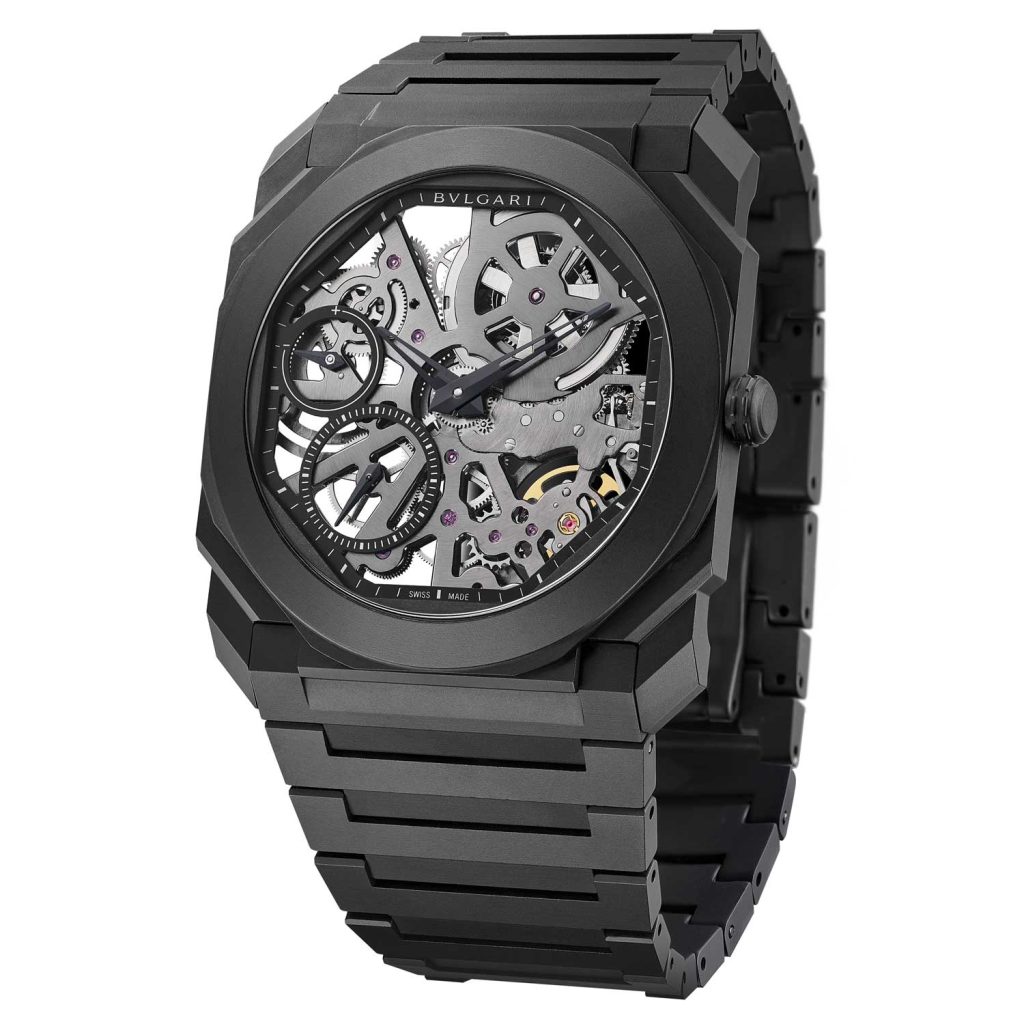
Octo Finissimo Ceramic Skeleton
And in the case of the ground-breaking Octo Finissimo, who could disagree? Year after year, Bulgari continues to reinvent the rules of traditional watchmaking, bringing together the old and the new to create timepieces that transcend the boundaries of fashion and conventional style. The multi-tasking Chronograph GMT sits in perfect harmony with its siblings, a beautiful, robust and multi-tasking timepiece and a true Renaissance watch.
David Alexander Flinn: Renaissance Man
Revolution UK’s March cover model, and unofficial Bulgari “friend of the brand”, is Brooklyn-based photographer, sculptor, filmmaker and occasional model David Alexander Flinn. Growing up between New York’s SoHo and Turin, Flinn pays homage to his (as well as Bulgari’s) Italian roots with a tattoo on his hand of the Roman declaration SPQR – Senātus Populusque Rōmānus/the Senate and People of Rome. With a Bachelor of Fine Arts degree from New York’s School of Visual Arts in 2009, he is a man with a very particular view on the artistry of modern industrial objects and tools and was happy to share his opinions with Revolution during shooting.
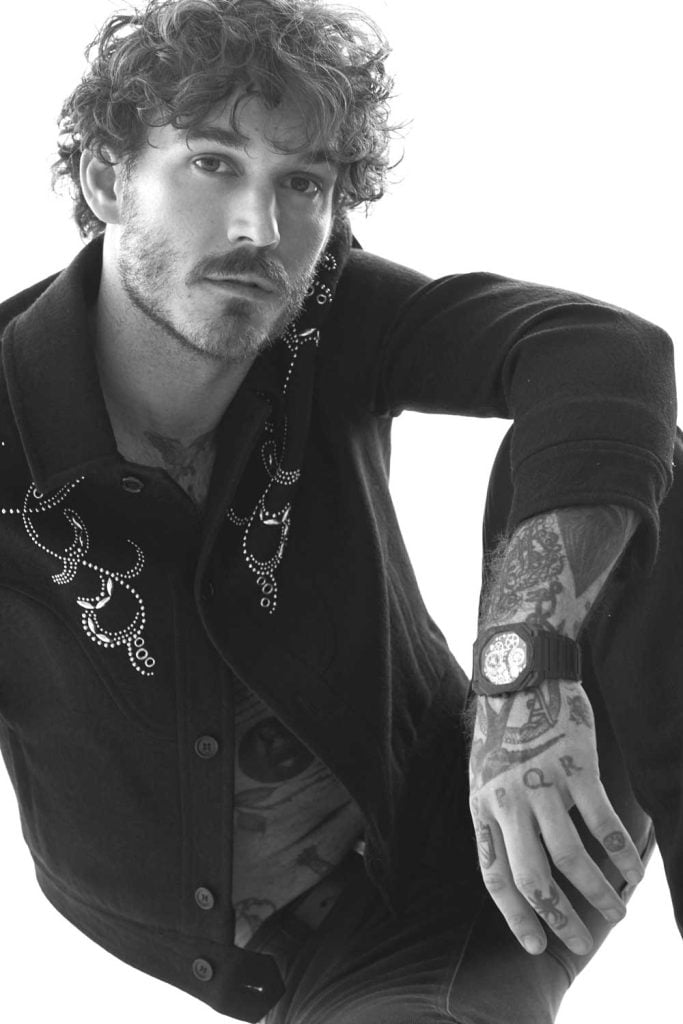
Octo Finissimo Tourbillon Skeleton Carbon. Shirt and jeans by Saint Laurent (Image © Revolution)
There is an ongoing discussion in the watch world about where time and art meet and whether an object that tells time – and is essentially a tool – can ever be truly considered art, despite the magnificent examples of craft that we see on dials and bracelets. Do you have an opinion on this?
It’s an interesting debate, but I think that watches have to be considered pieces of art, especially when you break the object down and look at the individual operations required to complete the end product – each one adding extra value to the piece and each one essential to the final work. Beyond that aspect, a watch today certainly has more scope and purpose than just the function of keeping time. As anyone who collects timepieces knows, watches have a very different role and dimension in this fast and digital world, and this is where key elements such as design and decorative arts and techniques come into play.
What is it about Bulgari in particular that you connect with?
Bulgari is a brand that never follows the pack in terms of creation – on the contrary, I would argue that in terms of style and trends it actually sets the benchmark. Not only does Bulgari perfectly express market trends, it actually anticipates contemporary artistic direction, often giving the designs buyers want before they even know they want them. Always in step with modern culture, always delivering on emerging social dynamics. I always remember Andy Warhol’s famous quote about his love of visiting the brand’s boutiques when he said: “I always visit Bulgari, because it is the most important museum of contemporary art.” This Is exactly how I feel – Bulgari consistently gives us creations that mirror their epoch.
Have you always been a watch lover and what would you look for in a wristwatch – design, function
or both?
All the usual daily objects – including industrial objects – catch my attention and, naturally, this includes watches. The perfect combination of design (form) and function is fundamental in any artistic approach and work. This is what every artist and every art lover is seeking, whatever it relates to. This is equally true for a wristwatch as it is for any contemporary industrial object.
As an artist, what appeals to you most about the Bulgari Octo Finissimo?
Octo is a good example of my previous words. This model appears to break the codes and the existing design rules in an industry which I feel is very conservative and conventional. That appeals greatly to me, of course, since I am not really a big fan of convention. Octo is a combination of shapes, which result in something very sophisticated. This watch definitely requires a cultural knowledge and sensitivity and I love this. It is very challenging and, for me, this is so much more interesting than resting in a comfort zone.
The watch you are wearing in our cover shoot is a dual-timezone watch, one of the most useful modern functions thanks to the amount we all travel today. Apart from timekeeping, what do you most value in a watch?
I must say that I’m really amazed by this Octo Finissimo Chronograph GMT. Its thinness is stunning when you consider the functions: indicating time, a stopwatch and measuring two time zones – so much within such a small volume. Regarding the GMT function, it is almost mandatory today. As you say, travel is a part of everyone’s life and this function is so useful. And that is what I truly value in a watch – genuinely useful complications, but also what I qualify as beauty. The watch must generate such an emotion that I think: “I need this.” This driver is central to all watch buyers because, as I said before, a watch is no longer an object that is solely a timekeeper.










